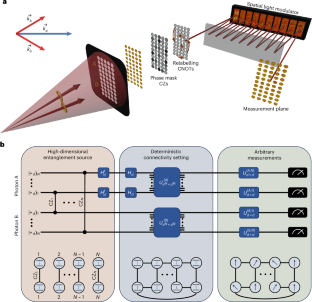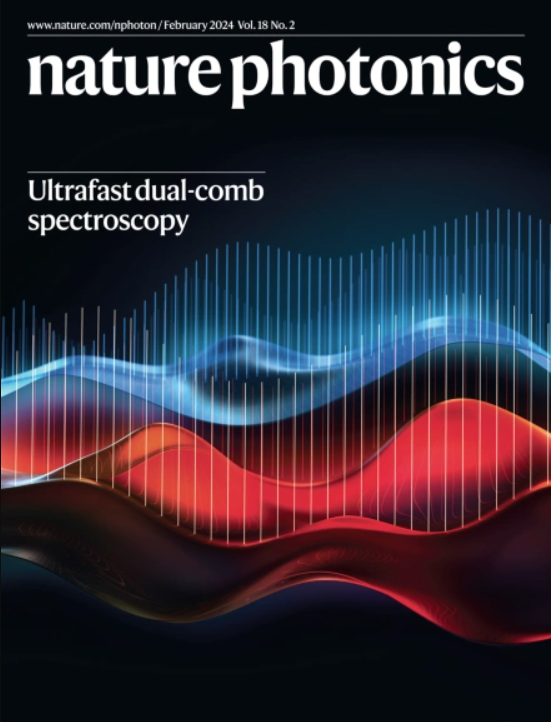Resource-efficient photonic quantum computation with high-dimensional cluster states
IF 32.3
1区 物理与天体物理
Q1 OPTICS
引用次数: 0
Abstract
Quantum computers can revolutionize science and technology, but their realization remains challenging across all platforms. A promising route to scalability is photonic-measurement-based quantum computation, where single-qubit measurements on large cluster states, together with feedforward steps, enable fault-tolerant quantum computation; however, generating large cluster states at high rates is notoriously difficult as detection probabilities drop exponentially with the number of photons comprising the state. We tackle this challenge by encoding multiple qubits on each photon through high-dimensional spatial encoding, generating cluster states with over nine qubits at a rate of 100 Hz. We also demonstrate that high-dimensional encoding substantially reduces the computation duration by enabling instantaneous feedforward between qubits encoded in the same photon. Our findings pave the way for resource-efficient measurement-based quantum computation using high-dimensional entanglement. By entangling multiple qudits within the Hilbert space of each photon, cluster states with up to 9.28 qubits are generated at a rate of 100 Hz. The high-dimensional encoding substantially reduces the computation duration compared to the standard two-dimensional encoding.


具有高维群集态的资源节约型光子量子计算
量子计算机可以彻底改变科学和技术,但在所有平台上实现量子计算机仍然充满挑战。基于光子测量的量子计算是实现可扩展性的一条大有可为的途径,通过对大型簇态进行单量子比特测量,再加上前馈步骤,就能实现容错量子计算;然而,以高速度生成大型簇态是众所周知的难题,因为检测概率会随着组成态的光子数量呈指数级下降。我们通过高维空间编码在每个光子上编码多个量子比特来应对这一挑战,以 100 Hz 的速率生成了超过 9 个量子比特的簇态。我们还证明,高维编码可在同一光子编码的量子比特之间实现瞬时前馈,从而大幅缩短计算时间。我们的发现为利用高维纠缠进行基于资源效率测量的量子计算铺平了道路。
本文章由计算机程序翻译,如有差异,请以英文原文为准。
求助全文
约1分钟内获得全文
求助全文
来源期刊

Nature Photonics
物理-光学
CiteScore
54.20
自引率
1.70%
发文量
158
审稿时长
12 months
期刊介绍:
Nature Photonics is a monthly journal dedicated to the scientific study and application of light, known as Photonics. It publishes top-quality, peer-reviewed research across all areas of light generation, manipulation, and detection.
The journal encompasses research into the fundamental properties of light and its interactions with matter, as well as the latest developments in optoelectronic devices and emerging photonics applications. Topics covered include lasers, LEDs, imaging, detectors, optoelectronic devices, quantum optics, biophotonics, optical data storage, spectroscopy, fiber optics, solar energy, displays, terahertz technology, nonlinear optics, plasmonics, nanophotonics, and X-rays.
In addition to research papers and review articles summarizing scientific findings in optoelectronics, Nature Photonics also features News and Views pieces and research highlights. It uniquely includes articles on the business aspects of the industry, such as technology commercialization and market analysis, offering a comprehensive perspective on the field.
 求助内容:
求助内容: 应助结果提醒方式:
应助结果提醒方式:


